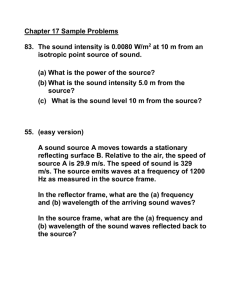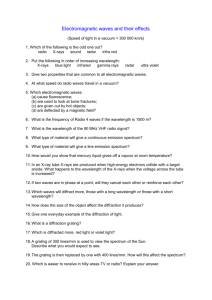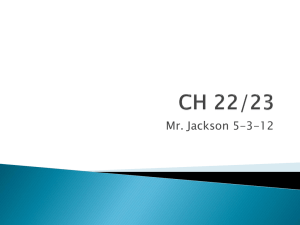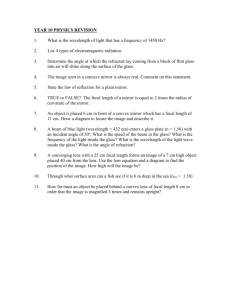77777 PHYSICS DEPARTMENT PHY 2054 Final Exam
advertisement
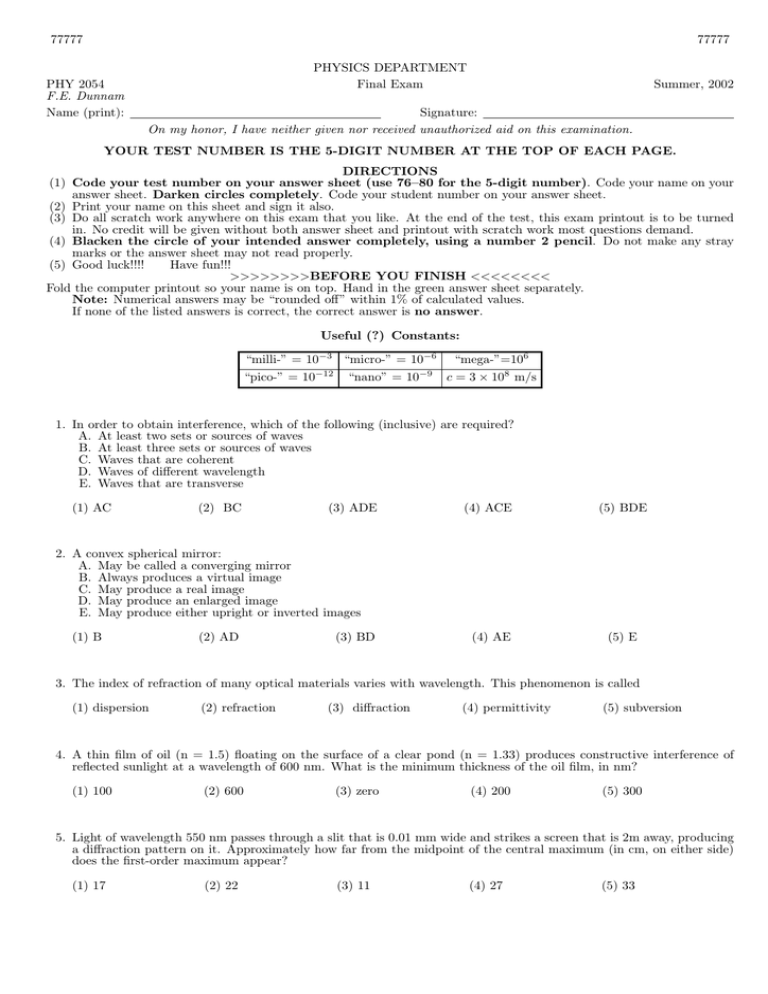
77777 77777 PHY 2054 F.E. Dunnam Name (print): PHYSICS DEPARTMENT Final Exam Summer, 2002 Signature: On my honor, I have neither given nor received unauthorized aid on this examination. YOUR TEST NUMBER IS THE 5-DIGIT NUMBER AT THE TOP OF EACH PAGE. DIRECTIONS (1) Code your test number on your answer sheet (use 76–80 for the 5-digit number). Code your name on your answer sheet. Darken circles completely. Code your student number on your answer sheet. (2) Print your name on this sheet and sign it also. (3) Do all scratch work anywhere on this exam that you like. At the end of the test, this exam printout is to be turned in. No credit will be given without both answer sheet and printout with scratch work most questions demand. (4) Blacken the circle of your intended answer completely, using a number 2 pencil. Do not make any stray marks or the answer sheet may not read properly. (5) Good luck!!!! Have fun!!! >>>>>>>>BEFORE YOU FINISH <<<<<<<< Fold the computer printout so your name is on top. Hand in the green answer sheet separately. Note: Numerical answers may be “rounded off” within 1% of calculated values. If none of the listed answers is correct, the correct answer is no answer. Useful (?) Constants: “milli-” = 10−3 “micro-” = 10−6 “mega-”=106 “pico-” = 10−12 “nano” = 10−9 c = 3 × 108 m/s 1. In order to obtain interference, which of the following (inclusive) are required? A. At least two sets or sources of waves B. At least three sets or sources of waves C. Waves that are coherent D. Waves of different wavelength E. Waves that are transverse (1) AC (2) BC (3) ADE (4) ACE (5) BDE (4) AE (5) E 2. A convex spherical mirror: A. May be called a converging mirror B. Always produces a virtual image C. May produce a real image D. May produce an enlarged image E. May produce either upright or inverted images (1) B (2) AD (3) BD 3. The index of refraction of many optical materials varies with wavelength. This phenomenon is called (1) dispersion (2) refraction (3) diffraction (4) permittivity (5) subversion 4. A thin film of oil (n = 1.5) floating on the surface of a clear pond (n = 1.33) produces constructive interference of reflected sunlight at a wavelength of 600 nm. What is the minimum thickness of the oil film, in nm? (1) 100 (2) 600 (3) zero (4) 200 (5) 300 5. Light of wavelength 550 nm passes through a slit that is 0.01 mm wide and strikes a screen that is 2m away, producing a diffraction pattern on it. Approximately how far from the midpoint of the central maximum (in cm, on either side) does the first-order maximum appear? (1) 17 (2) 22 (3) 11 (4) 27 (5) 33 77777 77777 6. Viewed at night from the high diving board at a swimming pool, the light from an underwater bulb forms a bright, 10-ft diameter circle on the surface of the water (n = 1.33). How far below the pool’s surface (in feet) is the bulb? (1) 4.4 (2) 8.8 7. The phenomenon of (1) polarization (3) 3.8 (4) 6.7 (5) 7.5 clearly demonstrates that electromagnetic waves are transverse. (2) dispersion (3) diffraction (4) aberration (5) resonance 8. You stand 2m in front of a plane mirror and take a picture of your image in the mirror with a camera. For what distance (in m) must the camera lens be focussed and is the image formed on the camera film real, or virtual? (1) 4, real (2) 4, virtual (3) 2, real (4) 2, virtual (5) 6, real 9. THE ANS TO THIS ONE IS 0 Your stereo loudspeakers are located with their centers 3m apart as shown. One of your friends(?) reverses one speaker’s leads so that they operate out of phase with each other. Along a wall 4 m across from the speakers, at what approximate locations with respect to point C (directly opposite the midpoint between the speakers) will 200 Hz waves interfere destructively? [speed of sound = 330 m/s]. (1) (2) (3) (4) (5) at C and 0.8m either side 0.8m and 1.6 m either side 2.2m either side at C and 2.2m either side no destructive interference can occur with sound waves 10. A block of glass (n = 1.55) is covered with a layer of water (n = 1.33). For light traveling in the glass, what is the critical angle (in degrees) at the glass-water interface? (1) 59 (2) 49 (3) 40 (4) any angle (5) none of these 11. What is the focal length (in cm) of a slide projector lens that casts an image that is enlarged 100 times, on a screen 10 m away? (1) +10 (2) −10 (3) +5 (4) −5 (5) none of these 12. An eye with vision problems has a near-point of 2m and a far point of 4 m. What power of lens (in diopters) will correct the near-sightedness? (1) −0.25 (2) +0.25 (3) −0.5 (4) +0.5 (5) −1.0 13. White light falls normally on a diffraction grating having 1000 lines/cm. At what angle (in degrees) will red light [λ = 650 nm] be observed in the third-order spectrum? (1) 11.2 (2) 3.7 (3) 7.5 (4) 1.1 (5) none of these 14. Unpolarized light is incident upon a stack of two ideal polarizers. The emerging light has 30% of its original intensity. What is the angle (in degrees) between the two polarizers’ transmission axes? (1) 39 (2) 53 (3) 57 (4) 73 (5) 18 77777 77777 15. A dentist’s inspection mirror is designed to produce a non-inverted image that is twice the size of the object when the mirror is held 1.5 cm from a tooth. What is the focal length of the mirror (in cm), and is the image real, or virtual? (1) +3, virtual (2) +3, real (3) −3, real (4) −3, virtual (5) +1, virtual

